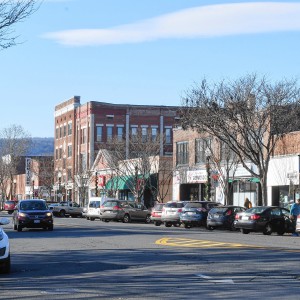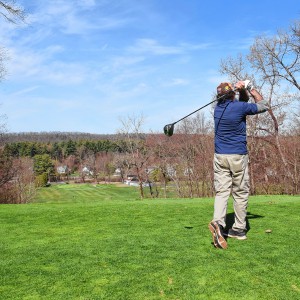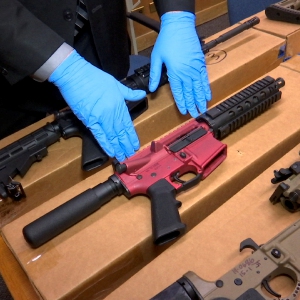Some Franklin County flags don’t fly with vexillological association
| Published: 01-10-2023 3:59 PM |
The designs of municipal flags in western Massachusetts generally did not fare well in a survey conducted late last year, but those associated with the towns made it clear they are proud of the banners they feel encapsulate their beloved homes.
The North American Vexillological Association (NAVA), an organization made up of more than 1,000 flag enthusiasts and scholars, conducted the online survey pertaining to 312 flags that have been adopted or redesigned since 2015. Vexillology is the study of flags. Among Franklin County ties, Sunderland’s flag earned a B grade while Wendell’s got a D and the ones for Conway and Whately received an F.
But Philip Kantor, who chairs the Conway Selectboard, said his town’s flag was crafted to depict Conway’s character and charm, not to meet any niche organization’s standards. He said no one thought, “What are people outside of Conway going to think of this?”
“It means a lot to the people in town because it showcases our crown jewels,” Kantor said.
Conway’s flag depicts rolling hills with buildings and a capitalized spelling of the town’s name in between the first two and final two letters of 1767, the year Conway was incorporated. Kantor mentioned the banner stands out among the 400 in the Hall of Flags in the Massachusetts State House. He said the flag is especially meaningful now because the woman who designed it, Mary Merriam, died in February 2021.
“It’s a handmade quilt. It’s really cool. Who else has a handmade quilt (as a flag)?” he said. “Our flag sticks out because it’s so unique. But if you don’t know the town, never been here, that stuff doesn’t mean much to you.”
Kantor’s sentiment was echoed by Neal Abraham, president of the Whately Historical Society, who explained the Whately town flag was designed in 2016 with a colored version of the town seal, which itself is more than 100 years old. The flag was then added to the Hall of Flags in the Massachusetts State House.
“I don’t know if anyone has explored in Whately what residents think of the flag design or of the seal design, for that matter. I suppose that might be a topic for future conversations among townspeople, but I don’t recall that topic coming up during the recent celebration of Whately’s 250th anniversary,” Abraham wrote in an email. “I think that rather than being devoted to the NAVA standards, any town discussions should focus on whether the flag adequately represents or symbolizes the town’s past, present and future. In my personal view, the key criteria should be that the flag adequately signals in a secular way the key aspects of the town’s history over at least 5,000 to 10,000 years, geography, activities and inclusivity.”
Article continues after...
Yesterday's Most Read Articles
Similarly, Laurie DiDonato, chair of Wendell’s Selectboard, said she feels her town’s flag perfectly represents it.
“In all honesty, I’ve never thought much about the purpose of a flag and what might make one better or not,” DiDonato said. “I love the town flag. I think it’s gorgeous. I’ve been to State House and I think it looks great up there next to all the other flags.”
The town was without a flag for more than 230 years but now has one consisting of a pink frame linked by bars of various colors to a sphere of human figures holding hands around an image of a tree and sunrise. The words “TOWN OF WENDELL” line the top of the sphere. DiDonato said the flag represents inclusivity and the great outdoors.
Geoff Kravitz, who started as Sunderland’s town administrator three years ago, said the town’s flag, which earned a B rating from the North American Vexillological Association, predates his tenure, though the banner was designed fairly recently. The flag depicts the town’s famous Buttonball Tree and a blue streak representing the Connecticut River.
“It’s gorgeous,” he said of the flag. “I don’t know what else we could have done to have gotten an A.”
Kravitz also said it is always nice to be recognized for something special.
The survey was taken by 300 NAVA members and about 2,500 members of the public who were recruited through advertisements on NAVA’s website (nava.org), The Gist podcast, Reddit and various social media platforms. Participants rated the design of each flag using a low-to-high scale of 0 to 10 and that ranking was converted to a letter grade. The survey was online from September to November and the results were published last week. Among other local connections, Westfield and Westhampton also received F grades and were ranked among the worst 25 in the United States.
This is the second survey NAVA has conducted on American municipal flags. The first was in 2004, when members of NAVA and the public were asked their opinions on 150 flag designs, including flags for the 100 largest cities in the U.S. and every state capital, with flags for at least two cities included for each state.
NAVA Secretary Ted Kaye explained the highest-scoring flags generally embody the five basic vexillological principles — simplicity (so simple a child can draw it from memory), meaningful symbolism, the use of two to three basic colors, no lettering or seals, and distinctiveness.
“You don’t need to be a flag expert or enthusiast to know good design,” Kaye said. “Flags should be seen at a distance, flapping, and from both sides, and only certain flags are effective flag designs for that reason. Form follows function, and the function of a flag is to be recognized from a distance.”
Kaye said he compiled NAVA’s guide of “good” flags and “bad” flags. The guide can be downloaded for free at bit.ly/3iqsi96.
Kaye elaborated by saying lettering can’t be seen from a distance.
“And seals represent the government — a flag should represent the people,” he said. “That’s my own personal opinion. Seals are designed to be on a piece of paper, 15 inches from your eye.”
Kaye, who got into vexillology three decades ago by collecting flags as tourist mementos, said the survey is purely a ranking of flags’ aesthetic value and not meant to be attacks on individual municipalities or their residents. He emphasized that a ranking should not be viewed as a criticism of a place.
“I like to say that a great city deserves a great flag,” Kaye said.
An example of a simple, quality flag, Kaye said, is the one belonging to Canada — it consists of two colors and only one symbol.
Kaye said NAVA, made up entirely of volunteers scattered around the United States, has no office but maintains a post office box in Boston. He lives in Oregon — the only state flag that is two-sided, meaning its reverse differs from its obverse. One side bears a portion of the state seal, the words “STATE OF OREGON” and “1859,” the year Oregon was admitted to the Union, while the other side features a gold figure of a beaver, the state animal. Kaye said he would prefer to have the beaver of both sides.
“That would be a great way to simplify the flag,” he said.
The Massachusetts state flag was two-sided until 1971. It now includes the state seal, which some have called to have redesigned. The seal depicts an Indigenous man holding a bow and arrow in hand. Above the man is an arm wielding a sword. A Latin inscription loosely translates to “By the sword we seek peace, but peace only under liberty.”
Kaye said Massachusetts has a golden opportunity to revamp its flag. Last year, a special commission charged with reviewing the official state seal and motto voted unanimously to recommend that both be replaced.
“So, you have flag change brewing at the state level,” Kaye said.
Reach Domenic Poli at: dpoli@recorder.com or 413-772-0261, ext. 262.

 Greenfield City Council approves borrowing $1.18M for Main Street redesign, sewer repairs
Greenfield City Council approves borrowing $1.18M for Main Street redesign, sewer repairs New owners look to build on Thomas Memorial Golf & Country Club’s strengths
New owners look to build on Thomas Memorial Golf & Country Club’s strengths Gun buyback event collects 195 unwanted firearms
Gun buyback event collects 195 unwanted firearms Quabbin region studied for MWRA expansion
Quabbin region studied for MWRA expansion
